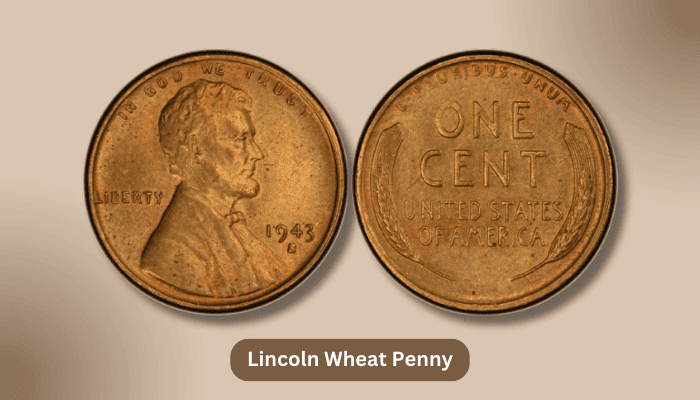The Genesis of a Numismatic Legend
Imagine holding a small copper disc that whispers stories of America‘s past. The Lincoln wheat penny isn‘t just currency—it‘s a time capsule, a miniature canvas capturing the spirit of early 20th-century America.
In 1909, the United States embarked on a revolutionary journey in coin design. President William Howard Taft commissioned sculptor Victor David Brenner to create a coin that would forever change American numismatics. This wasn‘t merely a monetary decision; it was a cultural statement that would resonate for generations.
The Man Behind the Design: Victor David Brenner‘s American Dream
Victor David Brenner‘s story is quintessentially American. A Lithuanian Jewish immigrant who arrived in New York with little more than dreams and talent, Brenner represented the immigrant experience through his art. His selection to design the Lincoln penny wasn‘t just a professional achievement—it was a testament to the American promise of opportunity.
Born in Lithuania in 1871, Brenner‘s journey mirrored the narrative of countless immigrants who saw the United States as a land of reinvention. He studied art in Paris, developed remarkable sculpting skills, and caught the attention of prominent artists and political figures. His Lincoln portrait wasn‘t just a technical achievement; it was a deeply personal interpretation of American idealism.
The Technological Marvel of Coin Production
Creating a penny might seem simple, but the process is a complex dance of metallurgy, precision engineering, and artistic vision. Each wheat penny represents hours of meticulous design, testing, and refinement.
The U.S. Mint in Philadelphia became a crucible of innovation during the early 20th century. Coin production was more than manufacturing—it was a form of national storytelling. Every strike of the die, every carefully measured metal composition spoke to America‘s technological prowess.
Wartime Transformation: The Steel Penny Era
World War II marked a fascinating chapter in wheat penny history. With copper critical for military equipment, the U.S. Mint made a remarkable adaptation. In 1943, pennies were struck from zinc-coated steel—a testament to national sacrifice and industrial flexibility.
These steel pennies weren‘t just coins; they were metallic representations of American resilience. Imagine a soldier receiving his pay, holding a steel penny that symbolized the nation‘s commitment to victory.
The Collector‘s Passion: More Than Monetary Value
Why do people collect wheat pennies? It‘s rarely about money. For most collectors, these coins represent connection—to history, to family stories, to a tangible piece of American narrative.
Tom Richardson, a third-generation coin collector from Ohio, recalls inheriting his grandfather‘s wheat penny collection. "Each coin was a story," he says. "Some had slight wear from decades of circulation, others were pristine. But each represented a moment in time."
Decoding Coin Value: A Complex Symphony
Valuing a wheat penny isn‘t a straightforward calculation. It‘s a nuanced assessment involving multiple factors:
Condition remains paramount. A penny in near-perfect condition from a low-mintage year can be exponentially more valuable than a more common coin. Mint marks tell their own stories—coins from San Francisco (S) or Denver (D) often carry premium values.
Rare variations like the 1909 VDB (Brenner‘s initials) or the legendary 1943 bronze penny can fetch astronomical prices. The 1943-S bronze penny, with only a handful known to exist, once sold for an incredible $840,000.
Regional Minting: A Geographical Narrative
Each mint location—Philadelphia, San Francisco, Denver—produced pennies with subtle variations. These regional differences weren‘t just technical variations but reflected local economic and industrial contexts.
A San Francisco mint penny might carry the marks of California‘s booming early 20th-century economy. A Denver coin could reflect the rugged industrial spirit of the Rocky Mountain region.
Preservation: The Collector‘s Sacred Duty
Preserving wheat pennies requires more than protective holders. It demands understanding environmental factors, handling techniques, and storage conditions.
Humidity, temperature, and even the oils from human hands can impact a coin‘s long-term preservation. Serious collectors invest in specialized storage solutions, treating each penny as a fragile historical artifact.
The Economic Ecosystem of Coin Collecting
Wheat penny collecting isn‘t just a hobby—it‘s a sophisticated market with its own economics, trends, and dynamics. Auction houses like Stack‘s Bowers and Heritage Auctions have transformed coin collecting into a global marketplace.
Prices fluctuate based on rarity, condition, and collector interest. A penny worth $50 today might be worth thousands in a decade, depending on market dynamics and discoveries.
Investment or Passion?
While some view wheat pennies as potential investments, true collectors are driven by something deeper. It‘s about preservation, understanding, and connection to history.
Conclusion: A Living History
The Lincoln wheat penny is more than a coin. It‘s a narrative of American innovation, resilience, and cultural evolution. Each penny carries stories of immigration, technological progress, and national identity.
For collectors, these small copper discs are portals to understanding our shared past—one penny at a time.
